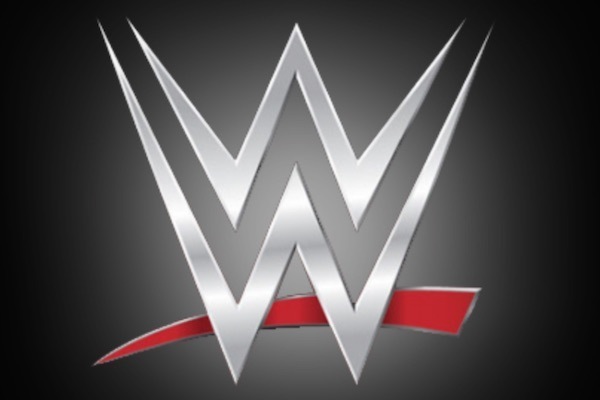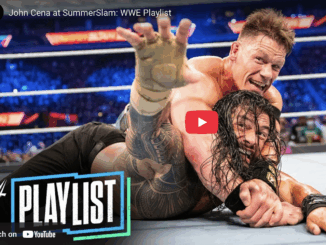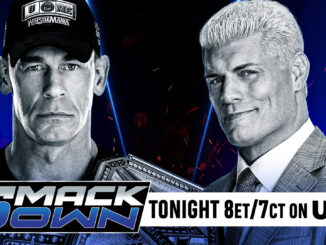
SPOTLIGHTED PODCAST ALERT (YOUR ARTICLE BEGINS A FEW INCHES DOWN)...
WWE financial executive George Barrios gave a detailed presentation on WWE’s current and future business at the Needham Emerging Technology Conference last Thursday, May 19 in New York City.
The interesting aspect of the conference is Barrios revealed more about WWE’s business than a typical quarterly conference with investors & analysts who regularly track WWE’s business.
The Needham conference was aimed at a room of people with zero to full knowledge of WWE’s business model, prompting Barrios to explain more than usual in order to bring everyone up to speed. As part of explaining more about the business, Barrios revealed several interesting items, detailed below…
Three Pillars of WWE Content
In 2015, WWE measured about 4.0 billion hours of consumption worldwide.
- 2.4 billion hours – Raw & SD viewing outside of the U.S.
- 1.0 billion hours – Raw & Smackdown on U.S. TV
- 400 million hours – YouTube & Facebook
- 250 million hours – WWE Network
(1) YouTube – entry level. Barrios said what is very interesting is WWE had 650 million hours of social & digital consumption in 2015. Five years ago, they had under 20 million hours of consumption.
Back in 2010, WWE was trying to track down their content uploaded illegally to YouTube. It was more about preventing others from profiting from WWE’s content, not actually profiting from their own content. Now, YouTube is a significant part of monetizing content.
Barrios noted that several years ago, 5-6 percent of revenue came from digital media. In 2015, it was 30 percent, mainly due to WWE Network, but he said other digital avenues are growing.
But, as Needham host Laura Martin asked, why should investors care about YouTube views if it translates to only about $10 million in revenue?
- Layer 1 – Barrios stressed WWE’s buzzword of “engagement.” He said WWE’s ability to drive the consumption is “hugely important” to them. Barrios said it leaks into all other businesses – more engagement leads to more action figures, viewers, t-shirt sales, etc.
- Layer 2 – Barrios said WWE is looking to reach the next generation. Barrios said they built the previous generation of wrestling fans with multi-family viewing in front of the TV. He said that will still happen going forward, but they want to bring in the next generation of fans on new platforms.
- Layer 3 – Barrios said money follows the eyeballs. The NFL putting games on social media is a huge marker in content delivery. Barrios said the old money slowly starts to go where the new money is.
Barrios relayed a New York Times article that equated it to the “old money” TV executives sitting in one room with a ton of cash coming in, while also looking at “new money” sitting in another room. He said there is a long, dark hallway that connects to where the new money is located. “When behavior changes, there is a tipping point,” Barrios said. So, WWE wants to be where the new money is when the tipping point happens.
(2) Core Programming. Barrios referenced WWE’s recently negotiating their Top 7 TV agreements in the U.S., U.K., India, and other countries.
Barrios said the renewal cycle yielded an increase of $45 million in TV Rights Revenue in 2015 and they are set to receive another $60 million in the next few years.
Within the core programming, Barrios described their monthly PPV events as the Playoffs and WrestleMania as their Super Bowl, with the PPVs being the “Playoffs” building to the Super Bowl.
(3) Long-Form Content. The WWE Network is the third pillar built on “long-tail content.” This essentially means turning their tape library into WWE Network offerings, plus offering new long-form content, reality series, and animated series trying to keep fans engaged year-round.
Barrios said WWE Network ranks #5 in the over-the-top services behind Netflix, Hulu, Amazon, and MLB TV. Barrios said the Network is behind HBO, Sling, and CBS.
Barrios also said the Network is the second-biggest and second-most profitable business segment in WWE.
Future Investments
Barrios said 25 percent of WWE’s revenue comes from outside the U.S., However, 80 percent of their social engagement is outside of the U.S. So, how will they turn engagement into revenue?
Barrios said the Network’s increased presence internationally will drive revenue going forward. Plus, WWE plans to make their chief investments overseas in China, India, and Latin America.
The other aspect is behaviors from country to country. Barrios said they have to convert their business to be more digital and direct-to-consumer in key markets. Plus, use a ton of data at their disposal from WWE Network to drive growth.
WWE Network Education
– Barrios said when WWE first launched the Network, they had one data point to determine and measure subscriber behavior, churn, etc.
Now, WWE is running a “sophisticated attribution model” to determine where Network subscriptions come from and why people unsubscribe, come back, etc.
Barrios said social and digital channels are a “huge part” of acquiring Network subscriptions, pointing back to why WWE is focused on social media because they believe it leaks into all other areas of their business.
Barrios said social media is driving their business. “There is no hope involved. It’s happening,” he said, noting many companies are just hopeful there is a net-gain from social media emphasis, whereas Barrios said they are seeing it actually play out. “It shows up in the traditional revenue metrics,” he said.
– After starting with one Network subscriber model, they now have about 25 different models to forecast behavior and analyze the data they are collecting.
Barrios said one year from now, he hopes they have 50 data models.
Within the data models, Barrios said they have about 12 customer segments dividing up their audience. By comparison, Barrios said Netflix has about 72,000 customer segments to try to analyze behavior of groups of subscribers.
Barrios said it’s no longer about demographics or sampling to determine behavior of their fanbase; he said they can cross-reference people from different ages, genders, locations, types of video watched, how much content watched, and other small categories to find larger behavior.
“The power of data is to divide up the audience,” he said. “It’s super-powerful in how to market the Network itself. We’re a long way off from 72,000, but a lot more than 1 – the predictive model had one prediction for that one customer base. Now we have 25 different models to forecast behavior.”
Barrios described their data points and customer segments as part of the “Holy Grail” using social media to create WWE 2.0.
“All these social platforms have different data structures. How do we link Facebook, Twitter, YouTube, and ticketing data together? How do we do that? That is super-powerful to us,” Barrios said, adding that data will redefine how they look at behavior of WWE fans to determine where they need to be in the future.
WWE Network Mistakes
Barrios was asked by Laura Martin what WWE’s biggest mistake was with the Network. Barrios did one of those job interview answers to “what’s your biggest weakness?” by saying they should have launched the Network sooner. She said that doesn’t count.
Barrios thought about it, then said starting with the subscription model of $59.99 locked in for six months.
“If we went back in time, I’d go back to the $9.99/cancel anytime model and have a free month,” Barrios said. Barrios said every other subscription service has the free month entry. He said there are no reasonable arguments to not have a free trial month, even giving away WrestleMania for free to new subscribers.
Barrios did not address the over-arching issue of whether a free month to watch premium content devalues the content itself, driving down value over time.
Barrios also did address WWE’s terrible marketing out of the gate on how to access the Network. WWE infamously ran confusing commercials trying to market the 20+ devices customers could access the Network outside of the fanbase’s traditional cable/satellite TV consumption. The confusing sign-up process and first-day crashing led to slow subscription out of the gate, which WWE eventually recovered from.
Barrios did acknowledge that people were calling WWE idiots during Year 1 for how they launched the Network and what their business model was. But, he was encouraged by the New York Times article about having to travel a long, dark hallway to get to the other room where “new money” was located.
“You have to have the courage and conviction to get through it. You learn how to fight through it. As a public company, you’re exposed. People are saying, ‘It’s a dumb idea. You’re idiots for doing this.’ It was a calculated risk and a lot of work led up to the lunch.”
Barrios added that WWE’s willingness to prepare was a big aspect of getting the Network through Year 1. Now they are applying this learning to finding “the next big thing – whatever it is.”
Along the way, Barrios revealed that WWE learned they did not have to go at this alone. He said WWE’s mindset has always been a pioneer and doing everything themselves, but Barrios said they learned how to “depend on others” to push through.
WWE Network Future
– Barrios addressed the Churn factor, which they are trying to learn about through their data points to address customer behavior.
Barrios said they’re also having to change their mindset. He said WWE’s mindset is like the retail business where you’re trying to get people to “buy, buy, buy,” since that’s what they’re used to from the PPV model of selling a PPV once per month, or selling a house show ticket.
Barrios said it’s a new ground game of “retaining and continually wooing” the fanbase to stick around. He said they have to do “a lot of little things right” to retain customers, which they are learning about through the growing data points.
Barrios said there will always be churn because of the nature of their “season” building to the WrestleMania Super Bowl, but they want it lower than it currently is. He stressed that the key to WWE’s business right now is keeping the churn down.
– Barrios said WWE decided to push forward with the Network plans after seeing PPV business being flat for about 10 years (after the peak of the Attitude Era). He said they sat down and had to decide what was the best way to monetize their growing library archive and monetize new content.
Barrios said all three items – PPV, tape library, and non-PPV new content – were in three separate parts of the business. So, WWE decided to bring them all together to form the Network.
Barrios said WWE looked at the idea of about 1.0 million homes around the world buying 2-3 PPVs per year. He said at $9.99 per month, with no PPV middleman, there was more money to be had with a year-round Network subscription from the 1.0 million homes than what WWE would receive from the 2-3 PPV buys.
“At $9.99, with all of this content, the value proposition was so immense,” Barrios said. Barrios added that the core idea is a “lower price point with more content will penetrate the huge fanbase.”
– Barrios said WWE’s surveys show that 100 million worldwide homes have someone in the house who has an affinity for WWE. If they could get 3-4 percent of those people to be year-round Network subscribers, that’s where the 3-4 million subscriber base is generated on the long arc of time.
Barrios said WWE does not have a timeline in mind for reaching the 3-4 million subscriber base. WWE also does not know what the Network will look like at maturity in terms of domestic versus international splits.
At the end of the First Quarter, the split was about 75 percent domestic and 25 percent international. Barrios said they consider the window to be 25-30 percent international at maturity, which points to WWE also expecting domestic to rise with international.
Barrios pointed back to 80 percent of their digital/social audience being international, so they would like to get to a point of 2.5 million domestic and 1.0 million international subs, which is a split of 71/29.
It sounds like a long ways off from the Q1-2016 finishing point of 1.03 million domestic and 330,000 international subs.
Part of that will be having to address stagnant domestic subscriptions. Asked about domestic subs being flat over the past year since WrestleMania 31, Barrios said it’s the cyclical nature of the “WWE season” mixed with old behaviors from WWE fans. Barrios said people drop off, then come back, and he hopes that with each passing “WrestleMania Season,” there will be incremental increases, like two steps forward after one step back.
“The special events bring people in,” Barrios said. “We have to woo people to stay.” He said he saw similar peaking when he worked for HBO under their model. “Not as big as WrestleMania, which is our Super Bowl,” but it was there. Barrios said he was one of the only WWE employees who had subscription-like experience before coming to WWE. Now, everyone seems like a seasoned veteran two years into the Network and with all of the data available to them to learn from.




Leave a Reply
You must be logged in to post a comment.